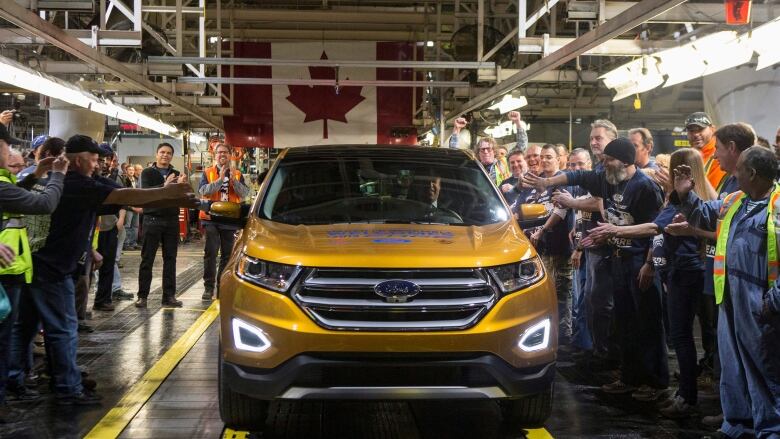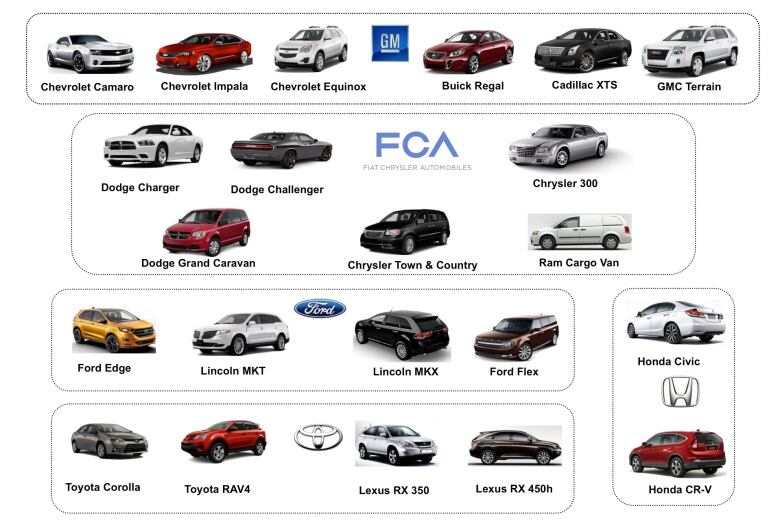Loss of Corolla doesn't have to be lethal blow for Canadian auto production
Canada has fallen to 3rd place in North American auto sector, but some think it can stay competitive

The news that Toyota is moving production of its popular Corolla vehicle from Cambridge, Ont.,to Mexico is further confirmation that Canada has slipped to third place inNorth America's auto sector,but don't go writing the obituary of Canadian car manufacturingjustyet.
Canada still makes about 2.4 million vehicles a year, about 80 per cent of which are exported, mainly to the U.S. While that's down from a peak of three million in 1999, auto manufacturing stillcontributes about$16billion annually tothe country's GDP and employs 120,000 people directly (plus an additional 280,000 inrelated industries) compared with more than $21 billion and 175,000 workers at its height.
- Toyota moving Corolla production to Mexico from Ontario
- Canada falls behind Mexico in auto output
- GM delays decision on Oshawa plant to 2016
Tworecord years for auto sales and a third one onthe wayfuelled by the U.S. economic recovery,have boosted production,but there's been bad news, too, even before Wednesday'sCorolla announcement. GM ismovingproduction of theCamaroto Lansing,Mich., fromOshawa,Ont., this year and in 2016 willshut downone of two production lines at its Oshawa facility.
There is no doubt that Canada's auto manufacturing sector has been in steady declinefromits heyday in the 1970s to late '90swhen theAuto Pactbetween Canada and the U.S. guaranteed that for every carsold in Canada, one had to be built here and that a majority of theparts were North American built.
"There was an emphasis on Canadian-built,valued-addedvehicles that required alot of labour, and there was a shift in the '70s and '80s to sourcealot of bigger vehiclesuphere and trucks," saidDimitryAnastakis, aTrent University history professor who specializes in the auto sector.
Mexico cheaper for smaller cars
The Auto Pact, signed in 1965 and later supersededby NAFTA, wasdissolved in 2001. In subsequent years, the 2008 financial crisis would decimate the auto industry and close several plantswhile stricterfuelefficiencystandards prompted a shift tosmaller cars.
"Low-cost jurisdictions like Mexico can produce small vehicles much cheaper than Canada, and as consumersembrace these vehicles, we are not well aligned with the market," said automotive industry consultantDennisDesRosiers.

As Toyota, Honda and other car companies move smallermodels like the Corolla south,they'rehavingto switchCanadian manufacturing plants over to higher-end cars that bringbigger profits.
"If consumers don't embrace these higher-value-added products, then production in Canada will fall, and that is our vulnerability,"DesRosierssaid.
- Canada's auto trade deficit could widen
- Canada-EU trade deal could change auto industry
- Canada must pay to play in auto industry
Mexico has beenaggressively and successfully courting the auto sector,attracting$7 billion US in investment last yearto Canada's $750 million, according to theCenter for Automotive Research. Itsrise to the position of second-largest auto producer on the continenthas come at Canada's expense, said MarkNantais, president of theCanadianVehicle Manufacturers' Association.
"From 2011 through2015, there were about 3.5 millionnew units of assembly capacity thatwere added in North America," he said. "Canada got less than three per centof that. Sixty-three per centwent to the U.S., and 34 per cent went to Mexico."
Canada fallsto10th
Globally, Canadaranks10thin auto production,behind not only Mexicobut alsoBrazil, India and, as of last year, Spain. Leading the pack are China, the U.S., Japan, Germanyand SouthKorea.
These plants won't be able to compete in the long run withgreenfieldplants being built in the U.S. South and Mexico.- Dennis DesRosiers, automotiveindustryconsultant
It's likely to slip even further, saysDesRosiers, since its "near impossible" to getnewassembly plants built in Canada, meaning itwill have to rely on upgrading existing plants.
"These plants won't be able to compete in the long run withgreenfieldplants being built in the U.S. South and Mexico not just because of labour costsbut because of the incredibly advanced production technology in these new plants," he said.
ButNantaissays that even if Canadacan't provide the kind of financial incentives thatMexico has been offering,there are areas in which itcan compete, such as low corporate taxes, a skilledworkforce,quality manufacturing facilities with a proven track recordand a sophisticatedsupply chain, which includes world-class, home-grown parts manufacturers likeMagna,LinamarandMartinrea.
"We've got a lot of good things we can capitalize on here, but things like the regulatory burden, the cost of utilities and unreliable rail service [arepotential obstacles]," he said.
Compete with U.S.,not Mexico
Nantaissays the industryshould focus onremainingcompetitivewith productioncentres like Michigan, Ohio and the southern U.S.states rather than Mexico, which has labour costadvantages that we are unlikelyto beat.

To do that, he said, Canada, will have to tread carefully when it comes to implementing things like the new cap-and-trade scheme announced by Ontario, where the bulk of auto manufacturing happens, and new vehicle emissions standards.
The holy grail for auto manufacturers is the global contract, said Nantais, and Canada has obtained at least two such deals recently: Ford's new Edge crossover, made at the Oakville Assembly Plant for the world market,and Honda's next generation CR-V, which will be made in Alliston, Ont., for export to the European Union.
"These are all good things that bode well, but there's no guarantee beyond that current product cycle, which is roughly five years," he said.

He says that thanks to the tariff-free movement of auto parts acrossthe U.S.,Canada and Mexico borders that began with the Auto Pact, thenotion of "Canadian made"cars is now moot.
"People buy vehicles madein Mexico all the time they don't even realize that," he said. "You might have an engine that's built in the U.S., a frame that's built in Canada and other parts that are built in Mexico, and final assembly gets built in Mexico."
Cars made in Canada
Source: Industry Canada, Ford, GM, Honda,Toyota, FiatChrysler












_(720p).jpg)


 OFFICIAL HD MUSIC VIDEO.jpg)
.jpg)



























































































